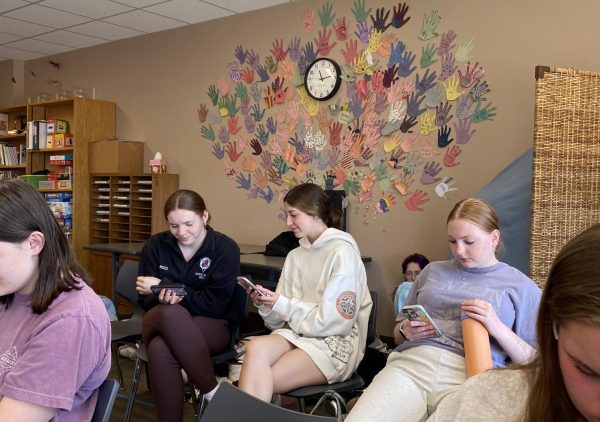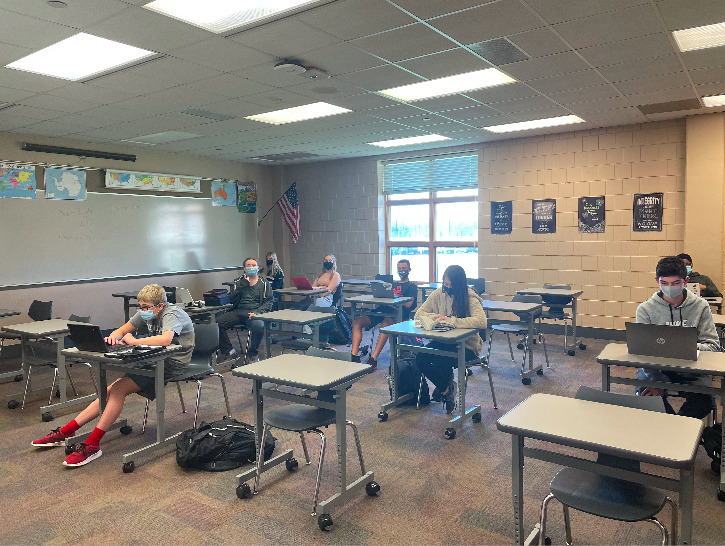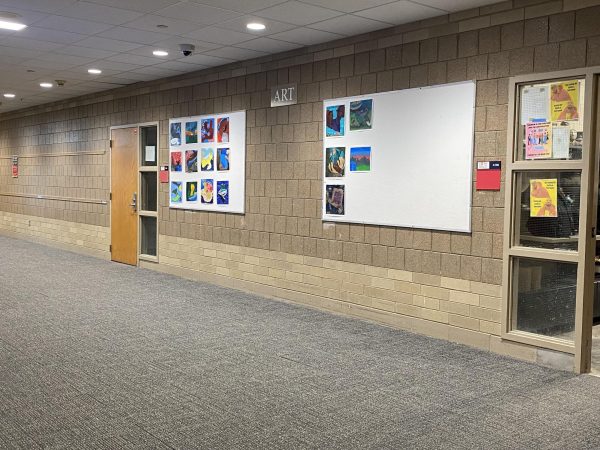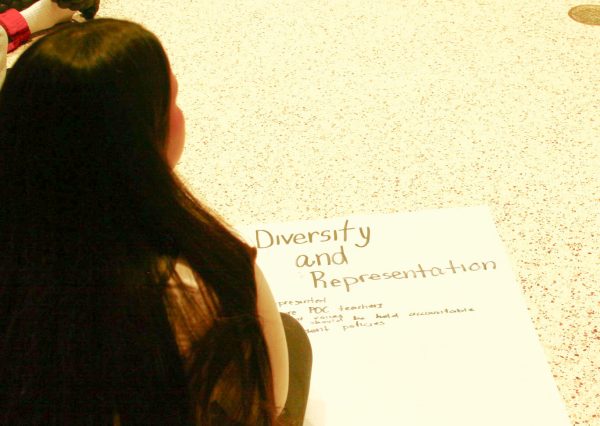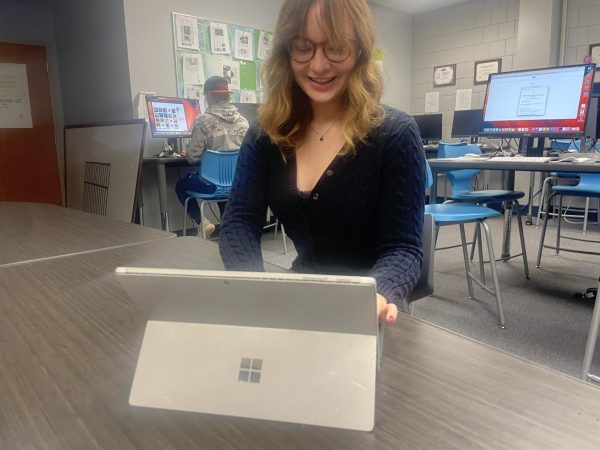School should switch to shorter, more efficient schedule next year
With this year’s new school schedule, students are forced to sit in classrooms for 80 minutes at a time with no breaks, which is not ideal for effective learning.
With this school year looking different due to COVID-19 protocols, it has caused the structure of the school day to be changed from what students are accustomed to. Instead of a traditional, six hour school day with six 50 minute classes, the school has changed to a four hour school day with three 80 minute classes. The school has also given the option to learn online, which has presented many new challenges for students.
However, with vaccines starting to roll out, and life slowly but surely going back to normal, it is unlikely distance learning will be in effect for future years. Since everyone will likely be back in the school building next year, the school will have to decide whether to go back to the old school day schedule, or the new-shortened schedule. While both have their pros and cons, a combination of both would benefit the school and especially the students.
The pros and cons of the different types of school days are obvious for students. With the old model, classes were shorter, while getting to learn each subject every day, but at the expense of a long, six hour day. With the new model, students get a shorter day with less classes, but with that comes sitting through 80 minute classes, which are surely not ideal for teenagers’ attention spans.
“The 80 minute classes are just way too long. I mean, I can’t even focus through the first 30 minutes,” freshman Parker Trobec said. He shares the opinion of many others in the school who have a hard time sitting through the unnecessarily long classes students have had to adapt to due to distance learning.
The school schedule should switch for next year that looks something like this: start at 8 a.m., have six, 40 minute classes with four minutes of passing time in between, and be dismissed at 12:20 p.m., with the option to stay for lunch and/or office hours. This option benefits everyone, especially students in every possible way. For one, an 8 a.m. start instead of 7:40 a.m. is beneficial for students, as it has been long talked about how students are not getting enough sleep. It is also beneficial for teachers and other staff members, as 20 minutes more of sleep, or an extra 20 minutes to relax and plan before the school day would be helpful to them and would hopefully reflect on the students.
“While it personally would not drastically affect me,” Spanish teacher Kirsten Carter said, “I would go along with what is best with students.”
Hopefully with a healthier sleep schedule for students, they would be better focused for a long school day.
Another issue this new school day covers is finding the perfect balance between adequate time for each class, and an earlier dismissal for students. While it was never likely 80 minute periods would carry over into future years, it would be best for classes to go down to 40 minutes as opposed to the traditional 50 minutes. By shortening the class time by ten minutes, and putting an optional lunch at the end of the day, it allows students to be dismissed at 12:20 p.m.. This is beneficial to students of all types, whether it be athletes, hard-core studiers, or people with long jobs after school.
For athletes, an early dismissal is beneficial for them due to the new amounts of free time they have. Since most practices start around 2:30 p.m., students now have two hours in between school and practice, where they can relax, hang out with friends, or take care of some homework. It may not seem like a lot, but these two hours make a huge difference, as most students with the old 2:10 pm dismissal had school, practice, workouts, and dinner all consecutively, and by the time they looked up it was 8:00, and they still hadn’t even got around to their homework.
“We have golf practice or tournaments 4 times a week, and we have to miss a lot of school. Having to miss that much and getting all the homework afterwards- it’s a lot of work and we need the time to relax,” Trobec explained.
The 80 minute classes are just way too long… I can’t even focus through the first 30 minutes.
— Parker Trobec
This early dismissal will allow athletes to manage their time better and allocate more time for schoolwork, but also free time and living their life. The same goes for people with jobs- the extra two hours would either give them more time to work and earn money, or extra time away from school and their jobs where they could take the time to relax and spend time with friends and family.
This model also benefits teachers as well. The earlier the school day ends, the earlier teachers can have staff meetings, finish grading papers and take care of other things so they can go home earlier and enjoy more time with their family. A lot of times, teachers are forced to stay late and miss important time with family and friends at home. If the school day ends two hours earlier, then teachers would be able to go home two hours earlier and enjoy themselves.
Some people might think a shorter school day puts students at a disadvantage. They may think a shorter day means less learning time, or possibly less time in class to work with teachers and ask for help, but this is not the case. Almost all 50 minute classes in the previous school years had at least 10-15 minutes of work time, with only 20-35 minutes cut out for strict learning time. By shaving off 10 minutes from each class, it would not ruin the quality or quantity of learning the students take in, but instead would take away a bit of work time which students would be more than happier to do in the comfort of their own home anyway.
Some may also claim students who have parents who work long hours, and therefore have to stay for office hours would be left bored in a school for two hours, but this is also not the case. Students who have to stay for a “seventh hour” and could use the time to talk to teachers and receive help, or the school could turn that time into something similar to flex time.
“When I was in high school we had an 8 period day and 43 minute classes. I loved that I was able to take so many different electives and anything that interested me in addition to having flexible hours to be a student assistant or study hall,” Carter said.
With this optional extra class, a student could spend an hour or two in the PAC working out, or meeting up with friends in a classroom to study, or they could go to a teacher they like and learn about something that interests them. The possibilities are endless.
The school should absolutely take measures to make the school day not only shorter, but more efficient. In this proposed model, students are essentially getting the same quality of learning they have been getting all their lives, but in a shorter time frame, allowing them to do more things with their life. By starting later and finishing earlier, students will be more energized, more focused, and live a healthier lifestyle due to the amount of stress that will be lifted off their shoulders. Time is the most important asset in life, and with this new school schedule, it gives everyone the time they need to be healthier, more successful people.

My name is Charles Calderone, I am a junior and a Copy Editor for the Pony Express. I play hockey in the winter, and golf in the spring and also participate...



